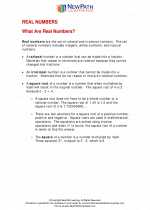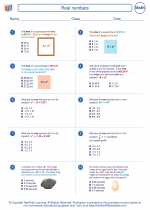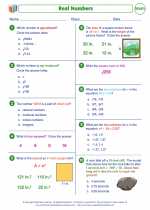Binomial
A binomial is a polynomial with two terms. It is often written in the form: a1x + a0, where a1 and a0 are constants and x is a variable. Binomials are commonly encountered in algebra and are an important concept in mathematics.
Key Concepts
- Binomial Theorem: The binomial theorem provides a formula for expanding binomial expressions.
- Binomial Coefficients: These are the numerical coefficients of the terms in the expansion of a binomial raised to a power.
- Binomial Distribution: In probability theory and statistics, the binomial distribution represents the number of successes in a fixed number of independent Bernoulli trials.
Binomial Theorem
The binomial theorem states that for any non-negative integer n, the expansion of (a + b)n is given by:
(a + b)n = ∑k=0n nCk * an-k * bk
Here, nCk denotes the binomial coefficient, which represents the number of ways to choose k elements from a set of n elements.
Binomial Coefficients
The binomial coefficient nCk, also denoted as "n choose k", can be calculated using the formula:
nCk = n! / (k! * (n - k)!)
where n! represents the factorial of n.
Binomial Distribution
The binomial distribution is used to model the number of successful outcomes in a fixed number of trials, where each trial has only two possible outcomes (e.g., success or failure) and the probability of success is constant for each trial. The probability mass function of the binomial distribution is given by:
P(X = k) = nCk * pk * (1−p)n−k
where n is the number of trials, k is the number of successful outcomes, and p is the probability of success on each trial.
Study Guide
When studying binomials, it's important to focus on the binomial theorem, binomial coefficients, and their applications in various mathematical problems and real-world scenarios. Practice expanding binomial expressions using the binomial theorem and familiarize yourself with calculating binomial coefficients. Additionally, understand the concept of the binomial distribution and its relevance in probability and statistics.
Be sure to work through plenty of examples and exercises to strengthen your understanding of binomials and their properties.
Good luck with your studies!
.◂Math Worksheets and Study Guides Eighth Grade. Real numbers

 Worksheet/Answer key
Worksheet/Answer key
 Worksheet/Answer key
Worksheet/Answer key
 Worksheet/Answer key
Worksheet/Answer key
 Worksheet/Answer key
Worksheet/Answer key
